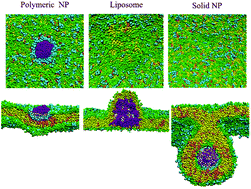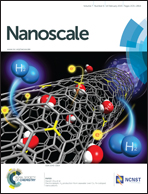Nanoparticle hardness controls the internalization pathway for drug delivery
Abstract
Nanoparticle (NP)-based drug delivery systems offer fundamental advantages over current therapeutic agents that commonly display a longer circulation time, lower toxicity, specific targeted release, and greater bioavailability. For successful NP-based drug delivery it is essential that the drug-carrying nanocarriers can be internalized by the target cells and transported to specific sites, and the inefficient internalization of nanocarriers is often one of the major sources for drug resistance. In this work, we use the dissipative particle dynamics simulation to investigate the effect of NP hardness on their internalization efficiency. Three simplified models of NP platforms for drug delivery, including polymeric NP, liposome and solid NP, are designed here to represent increasing nanocarrier hardness. Simulation results indicate that NP hardness controls the internalization pathway for drug delivery. Rigid NPs can enter the cell by a pathway of endocytosis, whereas for soft NPs the endocytosis process can be inhibited or frustrated due to wrapping-induced shape deformation and non-uniform ligand distribution. Instead, soft NPs tend to find one of three penetration pathways to enter the cell membrane via rearranging their hydrophobic and hydrophilic segments. Finally, we show that the interaction between nanocarriers and drug molecules is also essential for effective drug delivery.


 Please wait while we load your content...
Please wait while we load your content...